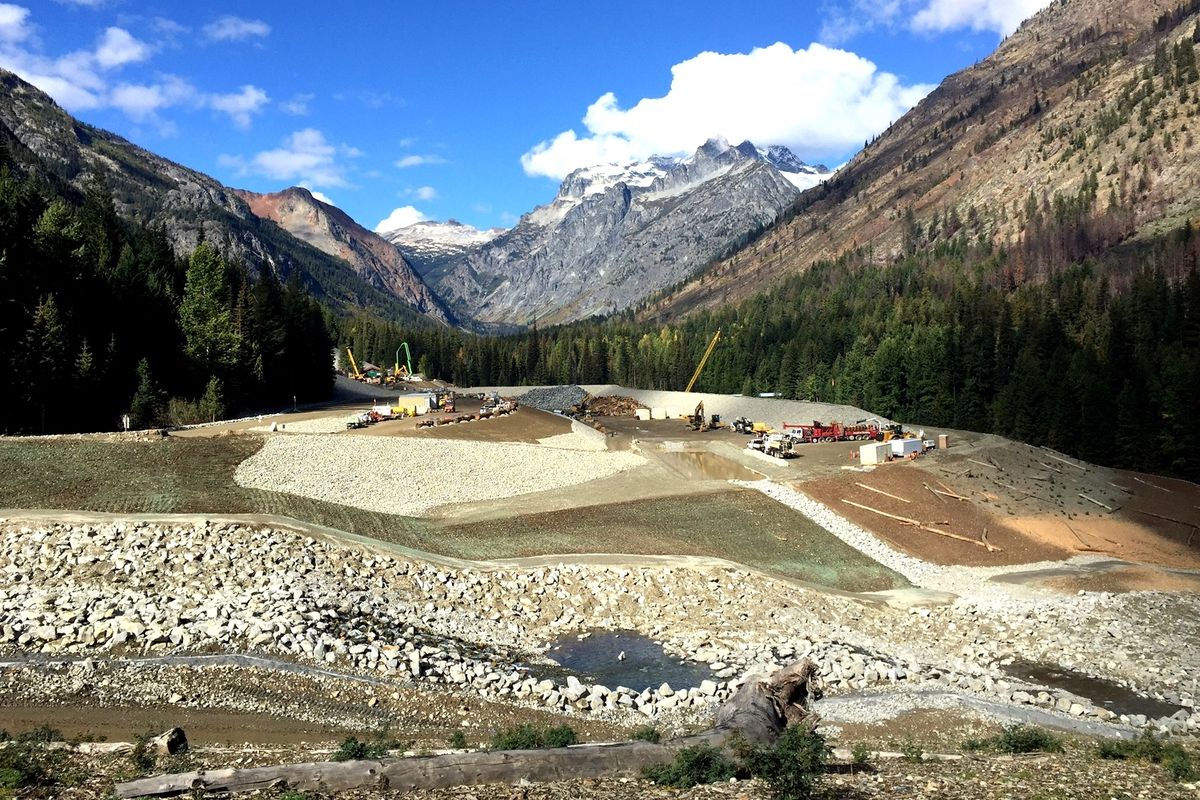Holden Mine cleanup progresses, guest services to resume at entrance to Glacier Peark Wilderness

ENVIRONMENT -- With a lot of tainted water under the bridge, we're no longer dwelling on what sort of environmental rules should have been in place BEFORE the Holden Mine was closed to copper production in the 1950s.
The gateway road and trails from Lake Chelan to the Glacier Peak Wilderness have been interrupted since 2012 by a $200-million remediation project to stop the flow of heavy metals from the defunct mine into the region's otherwise pure waters. In a sad paradox, environmental cleanup is as lucrative to local economies as the creation of the environmental damage.
But for now, the positive. Guest Services at Holden Village, a church camp with services to wilderness backpackers, is scheduled to resume this season. Initial season-opening volunteer work parties are underway this week.
Here's more encouraging information about the status of the project from the Okanogan-Wenatchee National Forest:
Chelan, WA – Deep in the heart of the Forest above Lake Chelan, a dramatic sight has unfolded for the last five summers as dozens of bulldozers, graders, loaders, and excavators worked to reshape a rock-strewn mountain side. The ground rumbles as giant dump trucks drive past, hauling yet another load of mine waste tailings across the 90-acre site. A giant crane hums as it pours more concrete for a footing. These are the sights and sounds of progress as hour by hour, day by day, the once toxic landscape of Holden Mine is restored.
“For the first time in nearly 60 years, clean water is once again flowing in Railroad Creek,” said Chelan District Ranger, Kari Grover Wier. “This is an important milestone and a significant win for aquatic species, wildlife species, and humans that depend on water from Railroad Creek and Lake Chelan.”
Abandoned in 1957, the Holden Mine contaminated groundwater with five toxic metals including aluminum, cadmium, copper, iron and zinc. These heavy metals washed downstream, polluting water in Railroad Creek, a major tributary to Lake Chelan. The metals also created a hazardous, hard orange coating known as ferricrete on the streambed. Unstable waste rock and tailings piles from approximately 10 million tons of mined ore further compounded the problem.
“The Holden Mine Remediation project is a big benefit to the residents of Chelan County. Not only is the contamination from the mine controlled for future generations, but this project also brought hundreds of jobs to local communities and revenue to the County through employment with Rio Tinto and their contractors.” said Mike Steele, District 12 State Representative and Chelan County resident. “Today, we celebrate with the Forest Service, Holden Village, Yakama Nation, Department of Ecology, Rio Tinto and all those who have worked hard to heal this landscape.”
Key Project Accomplishments:
- A 30 to 90 foot deep concrete barrier wall has been constructed between toxic tailings piles and Railroad Creek containing any future runoff.
- Thousands of gallons of contaminated groundwater are treated daily through an on-site treatment plant.
- Approximately nine million tons of tailings and 250,000 tons of waste rock piles were re-shaped and stabilized.
- During 2017, crews will plant native trees and shrubs atop former waste rock and tailings piles as well as work on an interpretive trail for the site.
- An estimated $240 million dollars of economic contribution were delivered in Chelan and Douglas counties as personnel, lumber, fuel, and numerous other materials and equipment were locally sourced in nearby communities.
- No tax-payer funds have been used to complete this work. Remediation costs have been paid exclusively by Rio Tinto, a global mining company which inherited the responsibility for the cleanup from the Responsible Party, Intalco.
- In 2017, Holden Village will resume guest services and programming.
“This project is a testament to commitment and partnerships through government and private entities,” added Grover Wier. “Five years later and a nearly 500 million dollar investment by Rio Tinto, a legacy of contamination has been turned into a legacy of clean water.”
Partners and stakeholders in this project include Rio Tinto, Holden Village, the Yakama Nation, Washington Department of Ecology and the Environmental Protection Agency. The U.S. Forest Service is the lead agency overseeing the remediation efforts, as the majority of the cleanup is on National Forest lands. For a full video of site efforts, please see www.holdenminecleanup.com